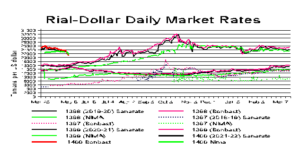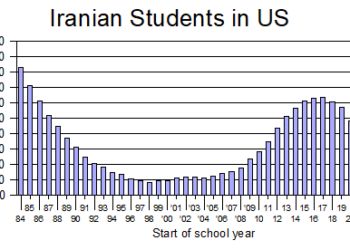May 14, 2021
 Improved weeks, gaining 17 percent against the dollar since Now Ruz, including a stunning 12 percent just since May 1.
Improved weeks, gaining 17 percent against the dollar since Now Ruz, including a stunning 12 percent just since May 1.
The dollar went for 252,000 rials on the first trading day after Now Ruz, according to the website Bonbast. A month later, on the last day of April, the dollar went for 237,000 rials. Just four trading days later, on May 5, it sold for 209,500 rials, though it has weakened since then and sold for xxx,xxx on May xx.
The Central Bank put out a statement May 4 that, for once, did not claim that the rial strengthened because of actions by the Central Bank. Instead, the bank attributed the rial’s sudden improvement to the public anticipating a settlement with the United States that would lift sanctions and release billions of frozen dollars, thereby vastly strengthening the rial.
Abbas Araqchi, the deputy foreign minister who is leading the Iranian team in the talks on sanctions, put out several very positive statements in the preceding several days talking about progress being made, the exact opposite of the negative statements he had been making before that.
But the Americans and Europeans denied that a settlement was near and said the talks still had much ground to cover, although progress was being made.
Meanwhile, the economic daily Donya-e Eqtesad said the rial seemed to be strengthening partly because there was little demand for foreign exchange. The only statistics it had were for NIMA, the foreign exchange bourse where importers of needed goods, but not the general public, are allowed to buy foreign exchange. The newspaper said that from April 1 through April 20 exporters turned $4.8 billion over to the NIMA exchange but importers bought a mere $1.3 billion or a barely one-quarter of what was available, which would be sure to depress dollar prices.
Many news reports in Iran spoke of the dollar “weakening.” But that is not accurate. It is the rial strengthening against foreign currencies—not just against the dollar, but the euro, yen, yuan, dirham and pound as well.


















